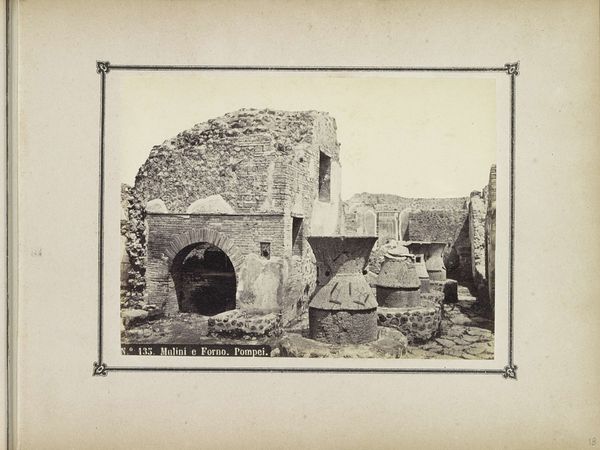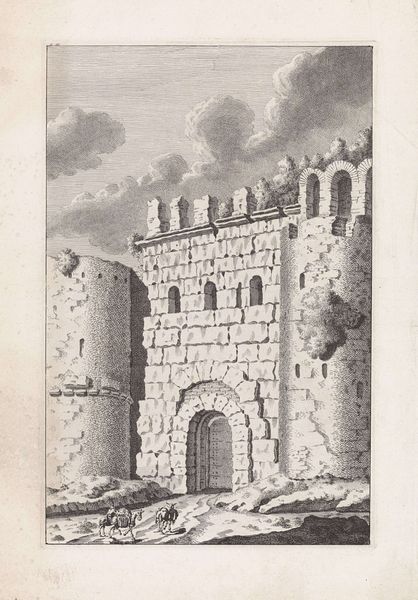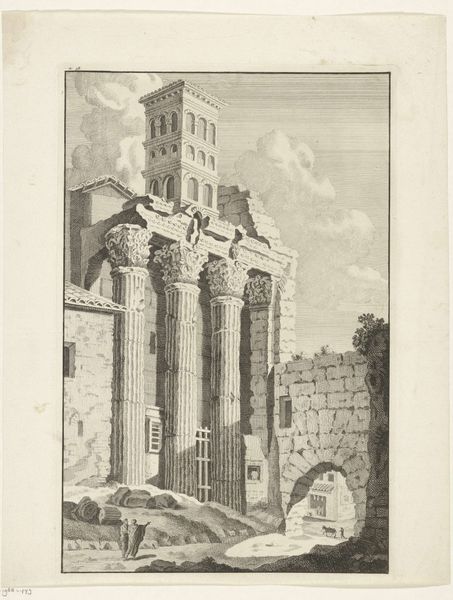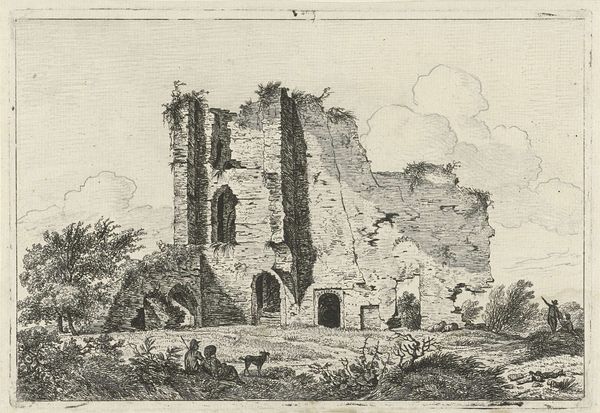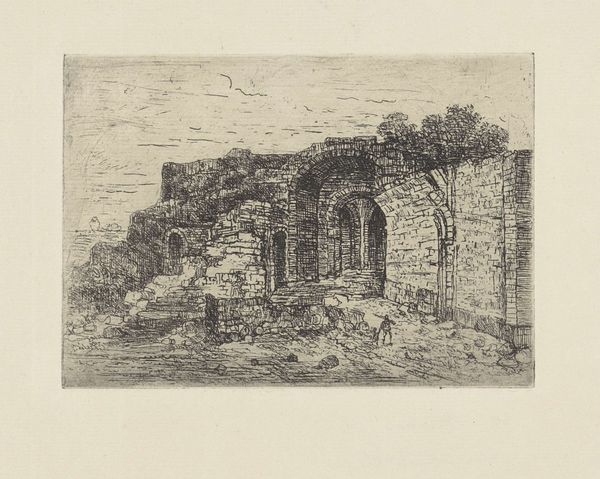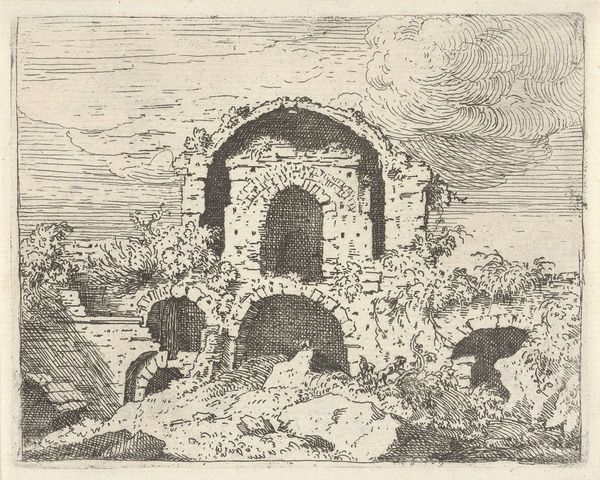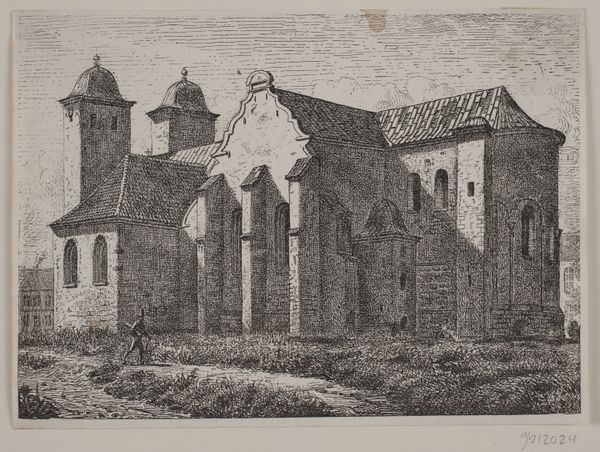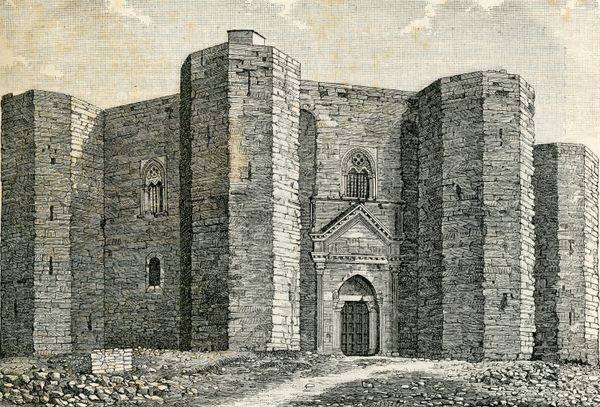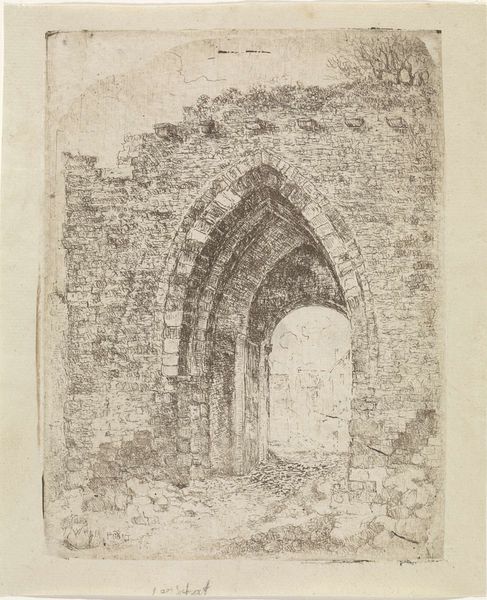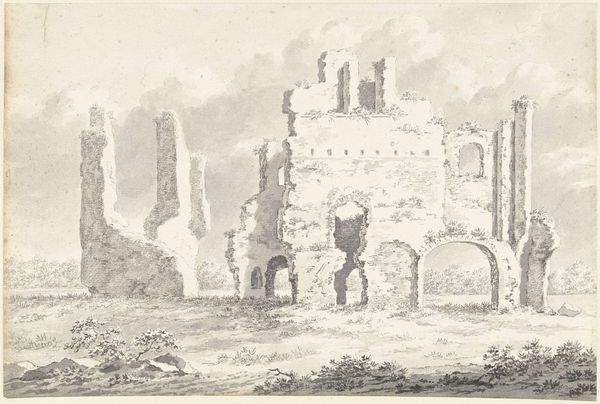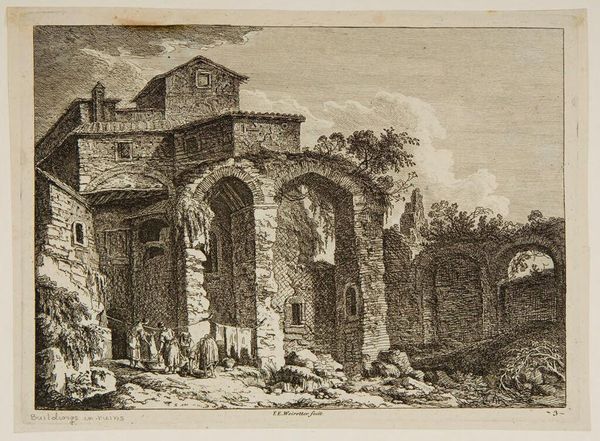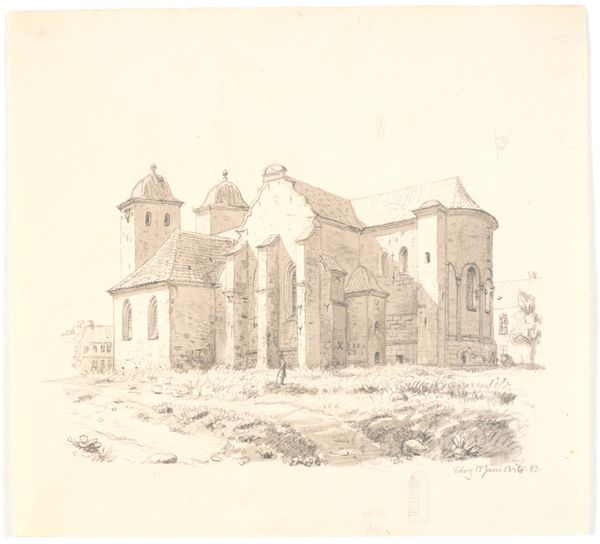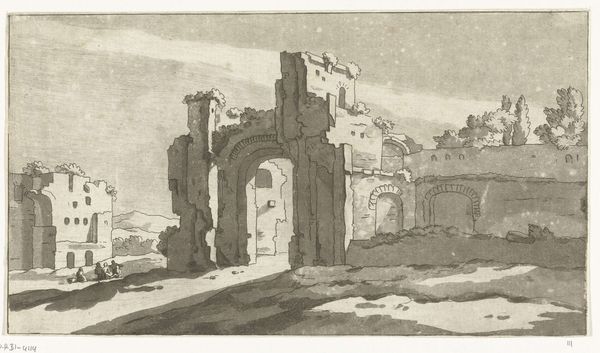
drawing, print, etching, engraving, architecture
#
drawing
# print
#
etching
#
landscape
#
historic architecture
#
romanesque
#
geometric
#
19th century
#
engraving
#
architecture
Copyright: Public domain
Giuseppe Barberis made this architectural study, "Chiesa Diroccata Del Secolo XI," with ink on paper. The print-making process allows us to consider how it was made, and how these processes have imbued the artwork with social or cultural significance. Barberis skillfully used hatching and cross-hatching to evoke the texture of the stone and crumbling brickwork. The precision of the lines suggests meticulous labor, mirroring the effort it would have taken to construct the original church in the eleventh century. But notice how the image also speaks to the inevitable passage of time, and the decay of even the most monumental structures. By recording the ruins, Barberis engages with a familiar theme of Romanticism. Yet the very act of rendering this scene in print connects it to another kind of production – that of readily available imagery, for a public eager to consume it. This emphasis on materials, making, and context challenges traditional distinctions between fine art and craft, enriching our understanding of the artwork's full meaning.
Comments
No comments
Be the first to comment and join the conversation on the ultimate creative platform.
